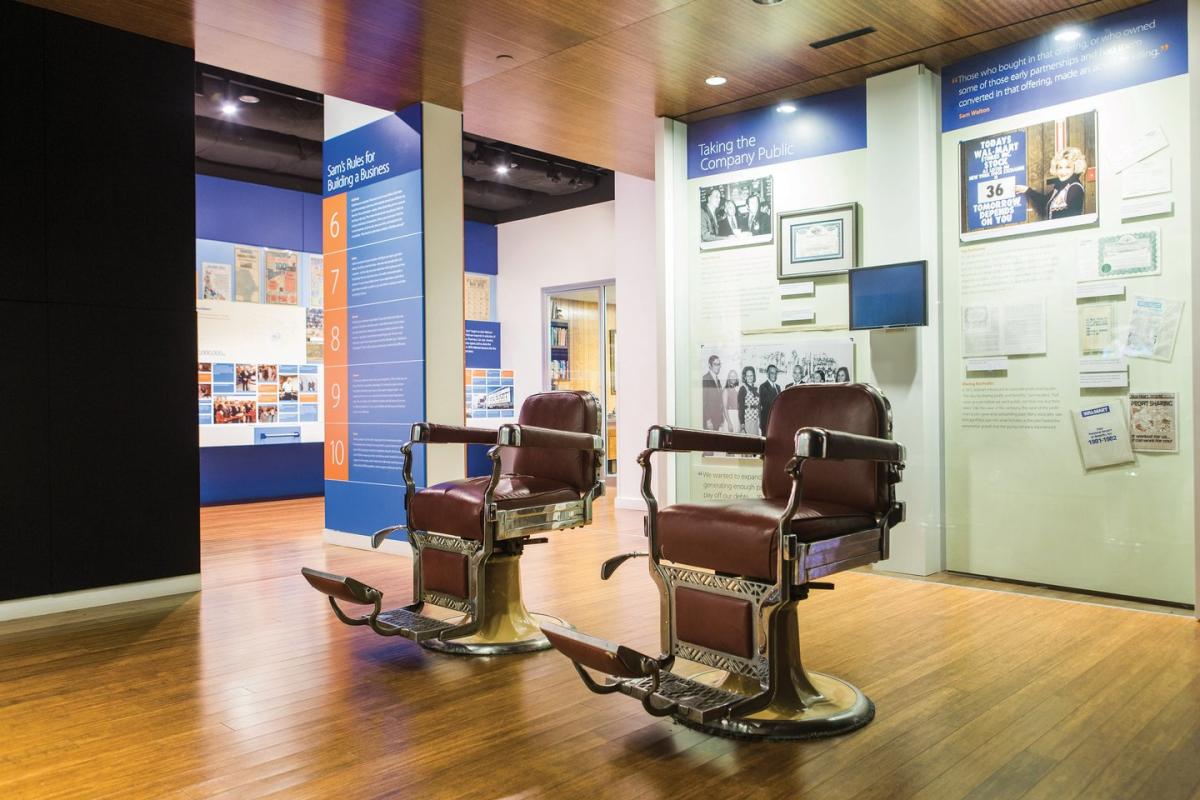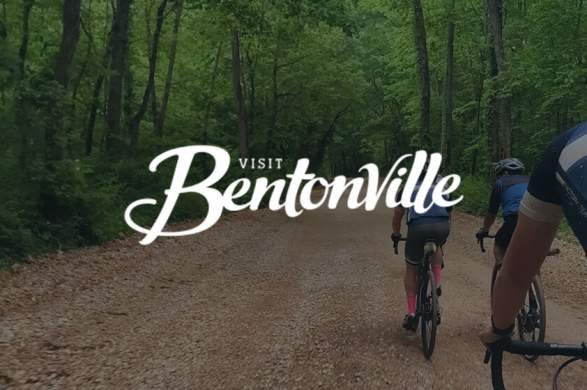From the Osage people's inhabitance of the area to the present day, Bentonville has been filled with historical landmarks and sights waiting to be explored. Below, we've highlighted just a few of the city's attractions ready for history buffs to uncover.
*Please note that some of these historical sites are on private property. We kindly ask that all visitors be mindful and respectful of this.
If you’re in search of a trip that will captivate your curiosity for history, whether that be retracing the steps of the Trail of Tears at the Museum of Native American History or learning more about our region's involvement in the Civil War, look no further than your next visit to Bentonville!
Explore our Historic Sites & Museums page.
Plan your trip today!
The History of Bentonville’s Establishment
For thousands of years, the Osage people used the region as a hunting ground, staying in present-day Benton County for months at a time. Settlers arrived around the early 1800s and initially named their settlement "Osage." On September 30, 1836, the area was chosen as a suitable site for the county seat, leading to the establishment of the town square.
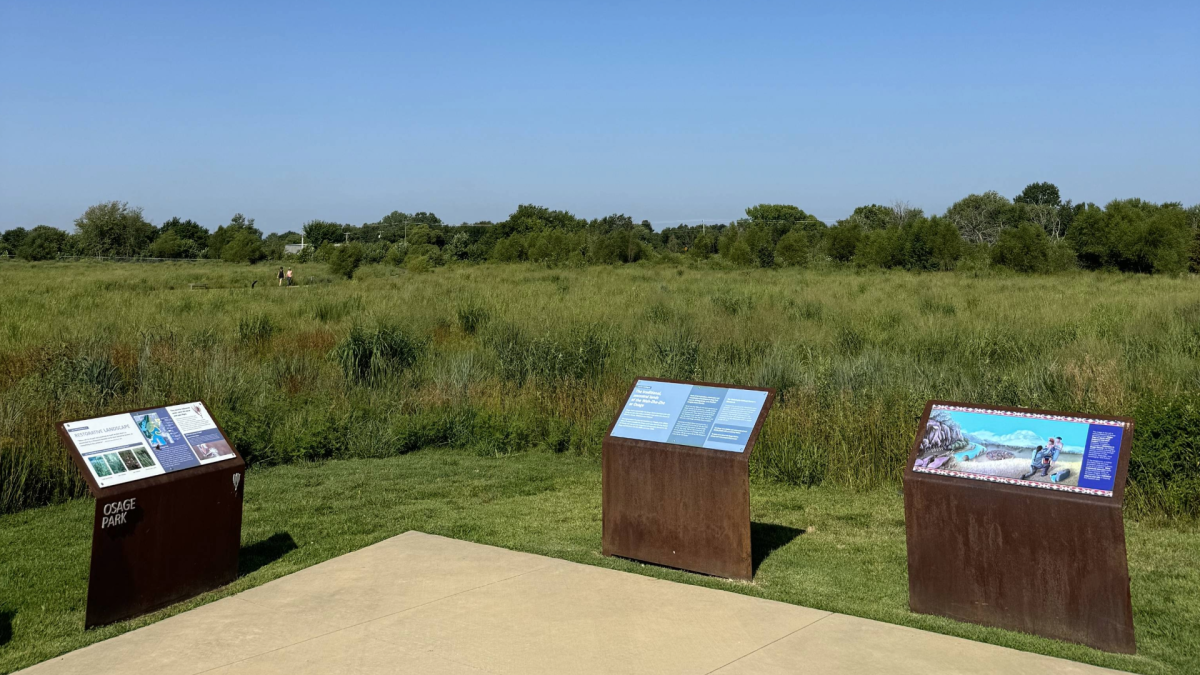
Osage Park | 700 SW 16th St
Look For: Historical signage along the boardwalks.
Take a walk through Osage Park and discover the history of the area's original inhabitants. Park at the pickleball courts and walk towards the Blue Heron Neon by Todd Sanders. Displayed here are a number of signs elaborating on the history of the park and the Osage people who inhabited the area before settlers arrived.
Explore the park’s 12-acre wetland ecosystem by foot or bike along the paved trails and floating boardwalks. Whether you want to explore the native wetlands, dive into the history of the area, play pickleball, visit the dog park, or connect with nature, Osage Park offers endless adventures.
The park is always free to visit and open to the public from sunrise to sunset.
Civil War Era
According to the National Park Service, only one minor skirmish took place in Bentonville during the Civil War. The closest major battle occurred in nearby Pea Ridge. Despite the lack of large-scale fighting, both Union and Confederate armies occupied Bentonville at various times. During these occupations, most of the city's older buildings were destroyed by fire. As a result, the few historical structures that survived offer a rare glimpse into a bygone era and hold great cultural importance.
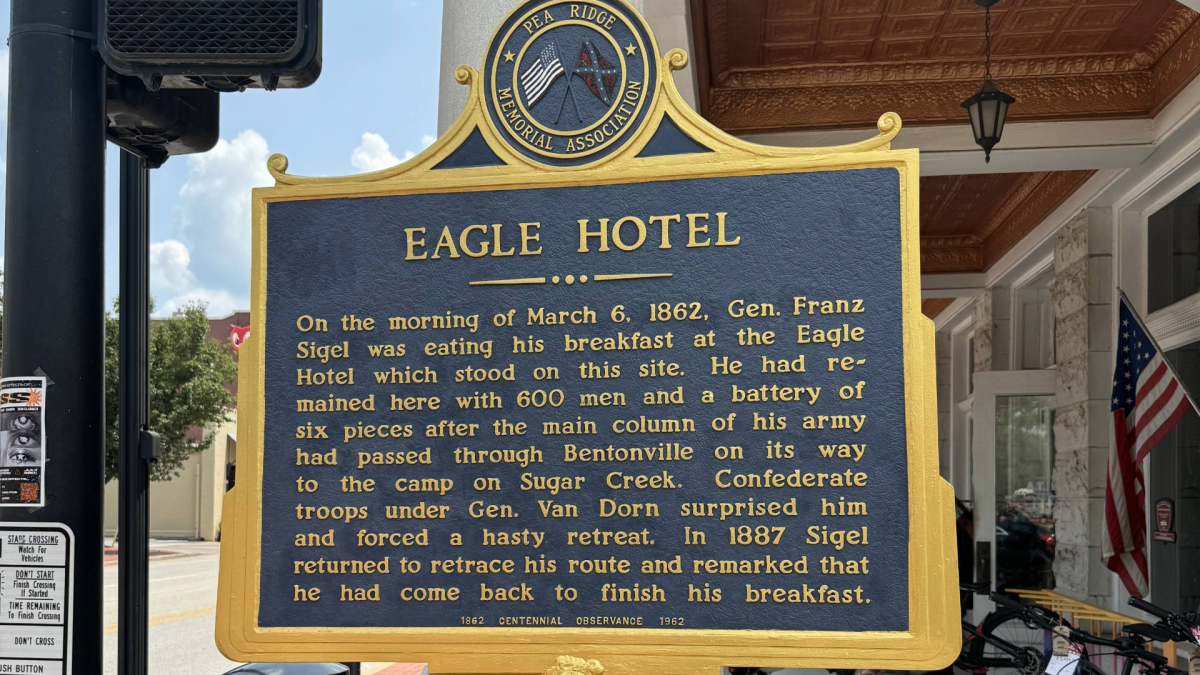
Massey Hotel | W. Central
Look For: Pea Ridge Memorial Association sign on the corner of the building.
While it how houses Phat Tire bike shop and Lady Slipper, the Massey Hotel was once the Eagle Hotel. You’ll find here details on General Franz Sigel, and his infamous skirmish and retreat after a surprise interaction with General Van Dorn forced a hasty retreat.
Peel Museum and Botanical Garden | 400 S Walton Blvd
Look For: The beautiful home across from Walmart Store 100
This stunning Civil War-era home, built by Colonel Samuel West Peel, is available for tours and events. He and his wife, Mary Emaline Berry Peel, raised their nine children in this villa-towered Italianate mansion. Visitors can explore the seven gardens on the grounds and step inside to see period pieces and artifacts that recreate the home's historical appearance.
The Reconstruction Era
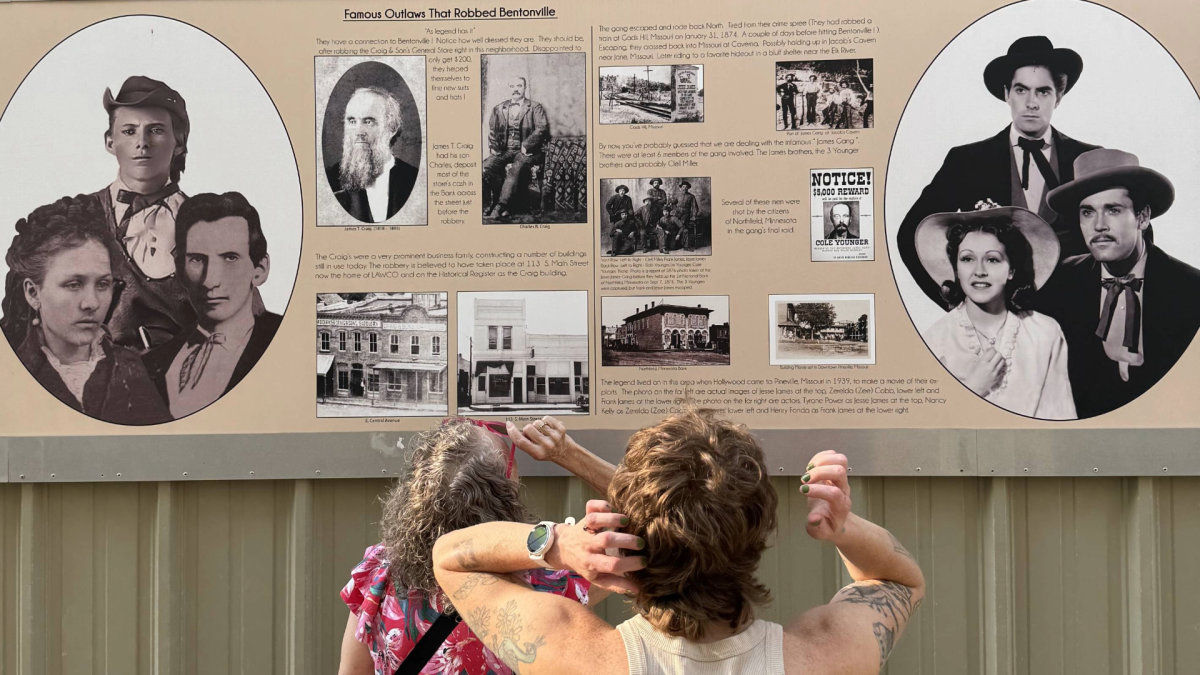
Alley Way between Between Butterscotch Bakery and Lawco | 111 S Main
Look For: Lighted alley with colorful murals.
This alley features numerous murals depicting prominent figures who have shaped Bentonville’s history. From the notorious "James Gang" to aviation pioneer Louise Thaden, these artworks narrate Bentonville's rich past. Dive into history, beautifully illustrated on the walls!
Former St. Paul AME Church | 302 NE C Street
Look For: The large signage outside on the grounds for visitors to view.
Just down the street from the Bentonville Square is a small church of major historical importance. Now converted to a private residence, this building once held the first and only African American Methodist Church in the area, the St. Paul AME Church. Directly across the street was once the Black School of Bentonville, the first school for Black children in Benton County.
Benton County Historical Society | 306 NW 2nd St
Look For: Signage outside the building. Check their hours on their website.
Step back in time and visit the historic sSchoolhouse from 1866, one of the last remaining one-room schoolhouses in the area. This charming building has undergone extensive renovations to preserve its historical integrity, offering a glimpse into the past. Inside, you'll find the comprehensive records of Benton County's history, making it an unmissable stop for any history buff.
The Progressive Era 1900-1945
Bentonville History Museum | 416 S Main St
Look For: The big red historic rail car.
Built in 1925, this former train station once connected the Frisco railway to the east in Rogers with the station to the west in Gravette. Today, it houses the Bentonville History Museum, a valuable resource for exploring the city's diverse history. From early homesteading to aviation pioneers, the museum offers a fascinating glimpse into how Bentonville has evolved over the years.
Learn more about the Bentonville History Museum on A New American Town podcast.
The 1950s and Beyond
From the post-war era to today, the area has experienced a remarkable influx of businesses and investments. Explore these significant historic areas below.
Walmart Heritage Lab | 240 S Main St Suite #190
Look For: The hologram of Mr. Sam Walton himself.
In 1950, Sam Walton bought a store that would later become the "Walton 5 and 10 Variety Store" in downtown Bentonville Square. This store marked the beginning of the Walmart Company, which is now the world's largest retailer. The original building is currently undergoing renovations; however, the Walmart Heritage Lab in Ledger offers a comprehensive look at Walmart's history and its impact on our region.
